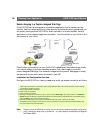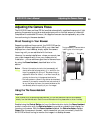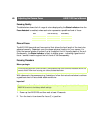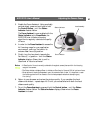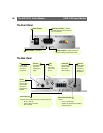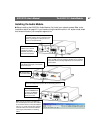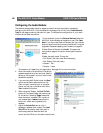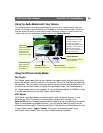
AXIS 2120 User’s Manual Adjusting the Camera Focus
43
Exposure Control Overview
The table below provides a summary of the Exposure Control settings in the Image -
Advanced page. Select the parameters appropriate to your lens type and product
application:
Other Advanced Parameters
Lens Options Description
DC Iris The AXIS 2120 is supplied with a DC Iris lens as standard; consequently, the DC Iris setting is the
standard factory default setting within the Image-Advanced page. It allows the user to manually
specify the exposure, shutter speed, gain, and ALC levels.
Non DC Iris - Manual Choose this setting if you have fitted a non-DC Iris lens to your AXIS 2120, but wish to adjust the
shutter speed and gain manually.
Non DC Iris - Shutter Choose this setting if you have fitted a non-DC Iris lens to your AXIS 2120, but wish to adjust the
shutter speed,manually.
Non DC Iris - Auto Choose this setting if you have fitted a non-DC Iris lens to your AXIS 2120 and would like the shutter
speed and gain to be adjusted automatically.
Lens Options Description
Shutter Speed Derived from the shutter speed on a normal camera, this parameter defines the exposure period for
each image. Use a high shutter speed only if your image subject is expected to be moving quickly;
otherwise, a slower speed will normally suffice.
Sharpness Defines a level of differentiation between light and dark areas in the image. Corresponding higher
levels of sharpness provide for sharper images, but also cause the image compression to be more
complex. Consequently, the file size of a sharp image can be significantly greater than for an image
that is less sharp.
Gain Adjust the gain to suit the average level of light at your point of installation. The AXIS 2120 should
be set to a corresponding higher level of Gain if your camera is normally monitoring an area at
night, or is sited in a dark room or cupboard.
ALC Level This defines how acutely the lens reacts to a single light source within the image. For example, with
the ALC level set to a lower level, the headlights from a car will generally cause the calculated aver-
age level of light to increase, and subsequently result in a compensated image that is usually much
darker.
Adjusting the ALC to a higher level reduces the sensitivity of the lens to single light sources within
the image.




